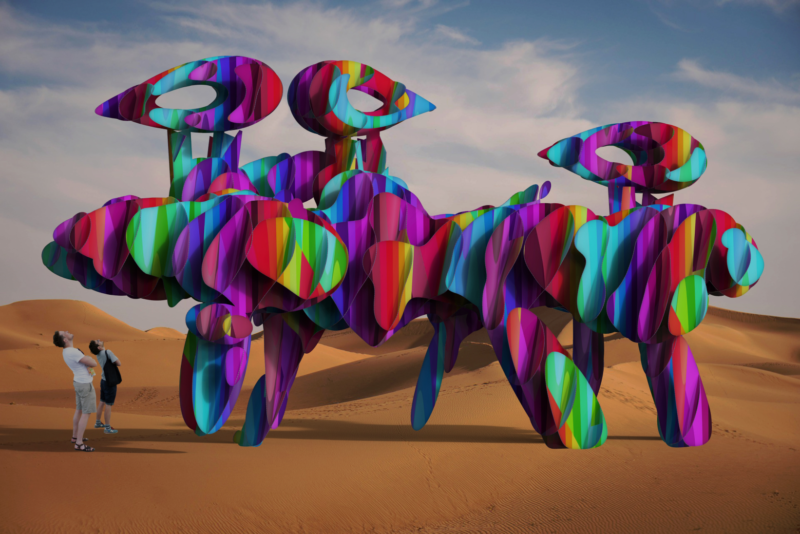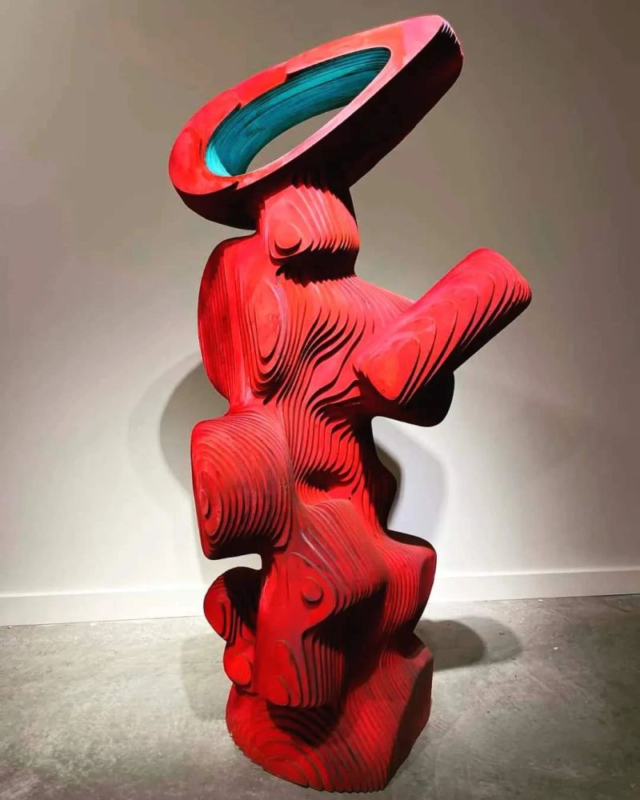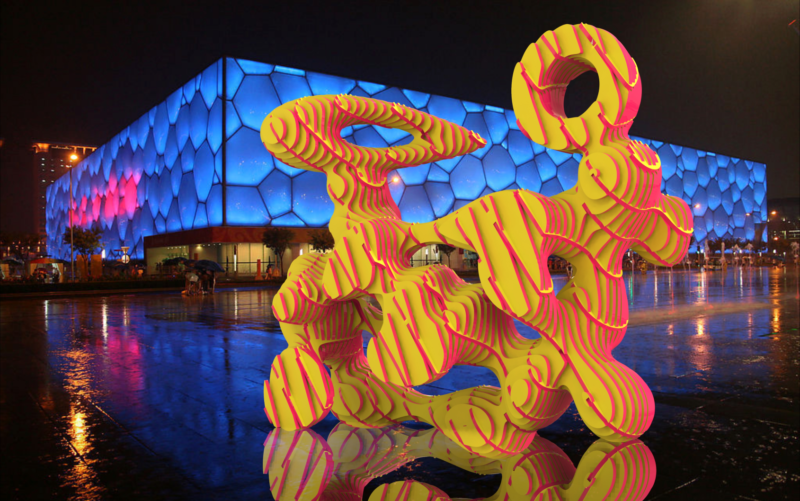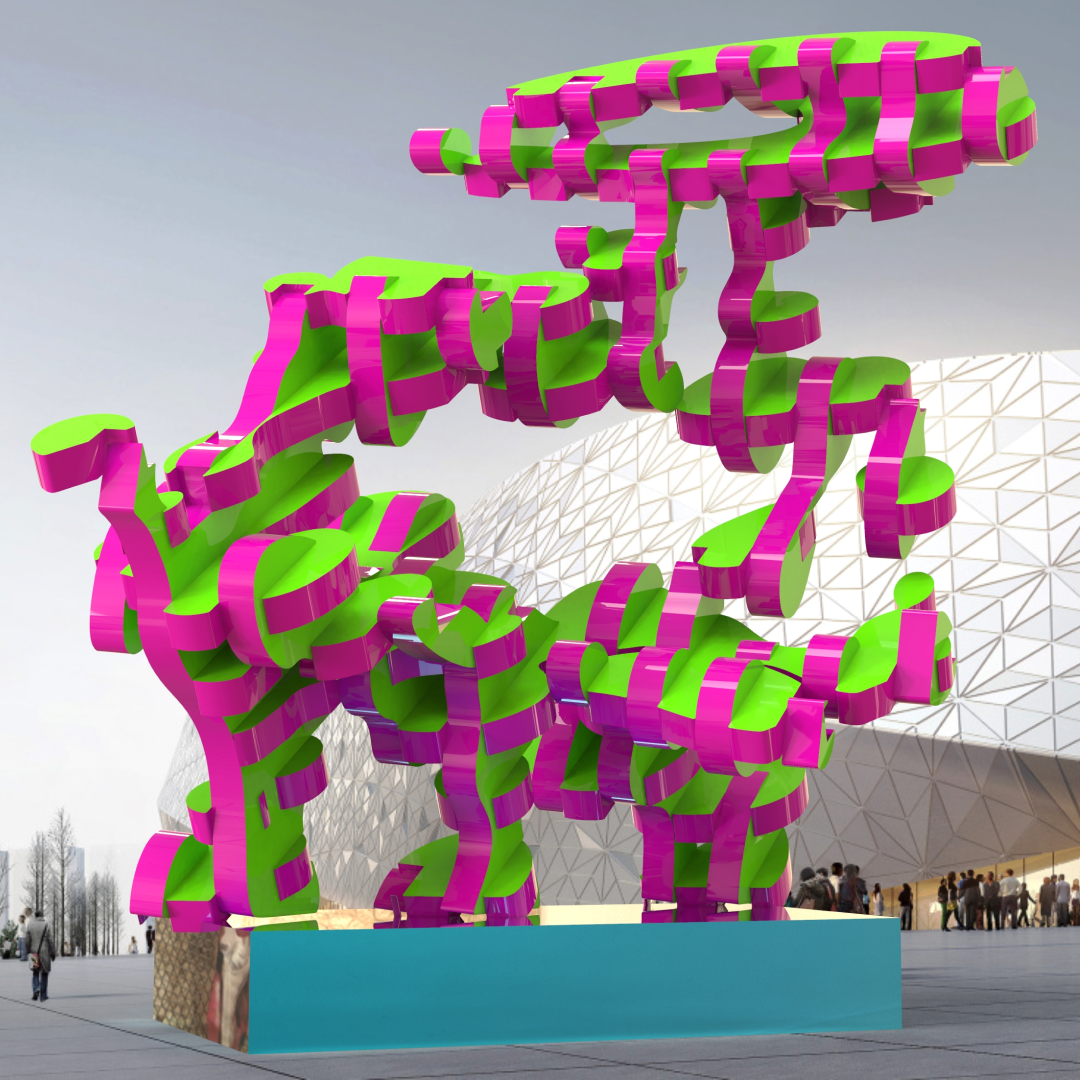Michael Levchenko is a Ukrainian sculptor who is now living and working in New York. He is a close friend of Fine Art Shippers, and we have been following his career for many years. We are proud to have his new works stored at our art storage in Manhattan.
Recently, we caught up with him to find out the latest developments in his artistic path and discuss the new technologies he is exploring.
Artist Talk: Michael Levchenko on the Synergy of Technology and Art
You moved to New York in October 2023. How has life been for you since then?
Michael Levchenko: I became a member of the National Sculpture Society here. I’m now working at a sculpture startup and developing my personal projects. I’ve completed a few new paintings recently. This year, I also participated in an international exhibition at the National Sculpture Institute of China in Beijing. Right now, I’m working on a project for a park and preparing an upcoming exhibition in Luxembourg this November. Besides, I’m currently in discussions about more potential exhibitions, including one at the United Nations in New York. While we generally agreed on this, we’re still figuring out the timing and logistics.
Can you talk more about the sculpture startup? What’s the idea?
This sculpture startup uses robots to create sculptures from marble. It’s basically 3D printing. But robots aren't perfect yet, so sculptors are needed to finish the pieces. My job is to refine the sculptures after the robots have done their part. Initially, most of our clients were sculptors who had never worked with stone before and saw this as an opportunity to experiment with a new medium. We also have architects who need custom pieces.
Has your new life in New York impacted your art? Did you find new sources of inspiration in this city?
I try to visit the Metropolitan Museum at least twice a month, it's an incredible collection and such a great source of inspiration to me. I could say that visiting New York museums and galleries shifted my approach to materials and scale. In fact, I'm considering reimagining some of my existing projects using new materials, for example, plastics or polished stainless steel. I would like to create something more futuristic.

Do you have a workshop in New York?
I'm currently working from home while looking for a studio. I'm in the process of starting my own company and searching for a space that can serve both as a creative workshop and a production facility. Hopefully, it will all come together soon.
What kind of company do you envision to create?
It will be a sculpture studio that integrates new technologies, such as 3D printing and a mix of traditional and modern welding techniques. In the U.S., new composite materials are emerging all the time, and I think interesting collaborations between manufacturers and inventors could grow out of it. The idea is to merge art with technological innovations, making both of them more accessible.
What makes new materials so attractive to you?
Materials like marble and bronze, though timeless, tend to feel too classical and not fully reflect modern life. Even modern artists like Henry Moore no longer seem as futuristic as they once did. New technologies are inspiring new art forms. It has always been this way. For example, paint tubes allowed artists to work outdoors in the 19th century, while the invention of photography led to the emergence of modern art, which moved away from realism. It’s all interconnected.

How do you use new technologies in your art?
I'm using AI in some of my projects. I sketch by hand and then refine the drawings with AI for presentations and more. I think in a few years, AI will enter all creative industries, many designers and architects are already using them. My ideas and proportions are still there, but AI generates unexpected variations I can further work with. I find this fascinating and it's something that really interests me. You recently placed your new works in Arcis—an art storage offered by Fine Art Shippers. How do you find the storage? It’s a really cutting-edge facility with everything needed for proper storage from climate control to security. Two of my new paintings are now stored at Arcis, but I still need to transport my sculptures from Belgium, which I’m planning to organize in the coming months. I
Could you tell us more about the paintings stored in Arcis? It’s a figurative series with an apocalyptic, pessimistic tone. The figures, in gas masks, are paired in conversation—man with man, woman with woman, woman with child.
The series is my reflection on the state humanity has found itself in today. It feels like we’re on the brink of a major global war, which could erupt at any moment. We saw how the pandemic struck unexpectedly, and now the wars in Israel and Ukraine are clear warning signs. If these aren't resolved peacefully, they could spiral into full-scale global conflicts. In many ways, they already are—with coalitions of countries involved on both sides.
 How could these conflicts be resolved, in your opinion? Now that I live in New York, I can see that it’s a perfect example of how people from completely different backgrounds can coexist. There are over 150 nationalities here—you see Mexicans and Uzbeks working side by side in Hasidic shops, and that doesn’t surprise anyone. At the same time, people maintain their identities after living for decades here. They integrate but don’t assimilate. It’s a great example of how problems can be solved. Photo courtesy of Michael Levchenko
How could these conflicts be resolved, in your opinion? Now that I live in New York, I can see that it’s a perfect example of how people from completely different backgrounds can coexist. There are over 150 nationalities here—you see Mexicans and Uzbeks working side by side in Hasidic shops, and that doesn’t surprise anyone. At the same time, people maintain their identities after living for decades here. They integrate but don’t assimilate. It’s a great example of how problems can be solved. Photo courtesy of Michael Levchenko
